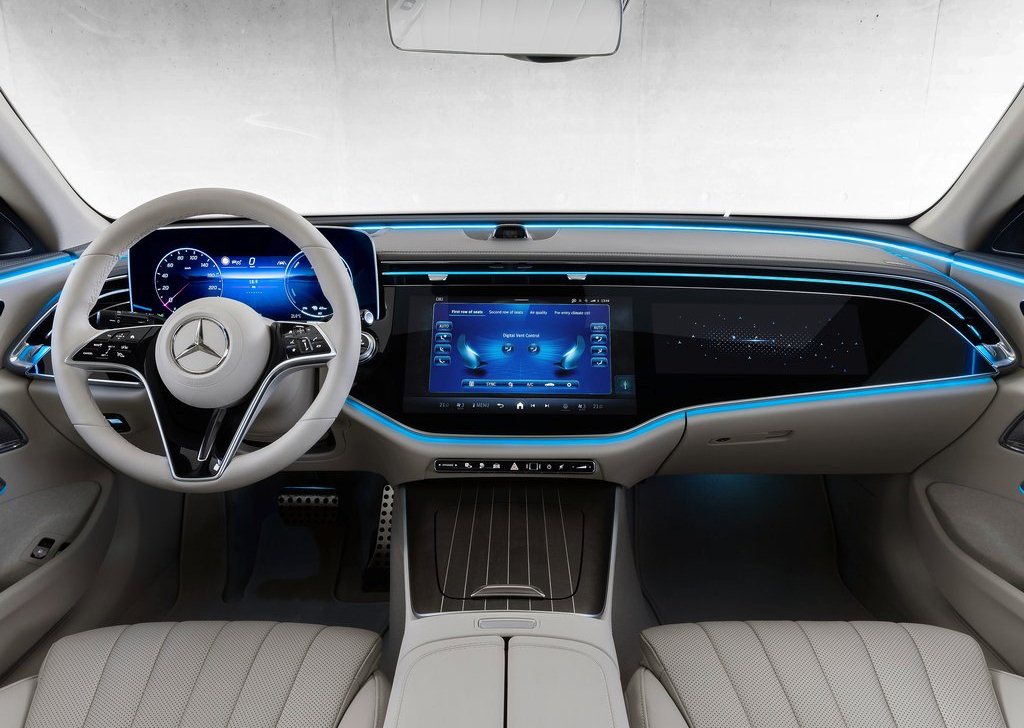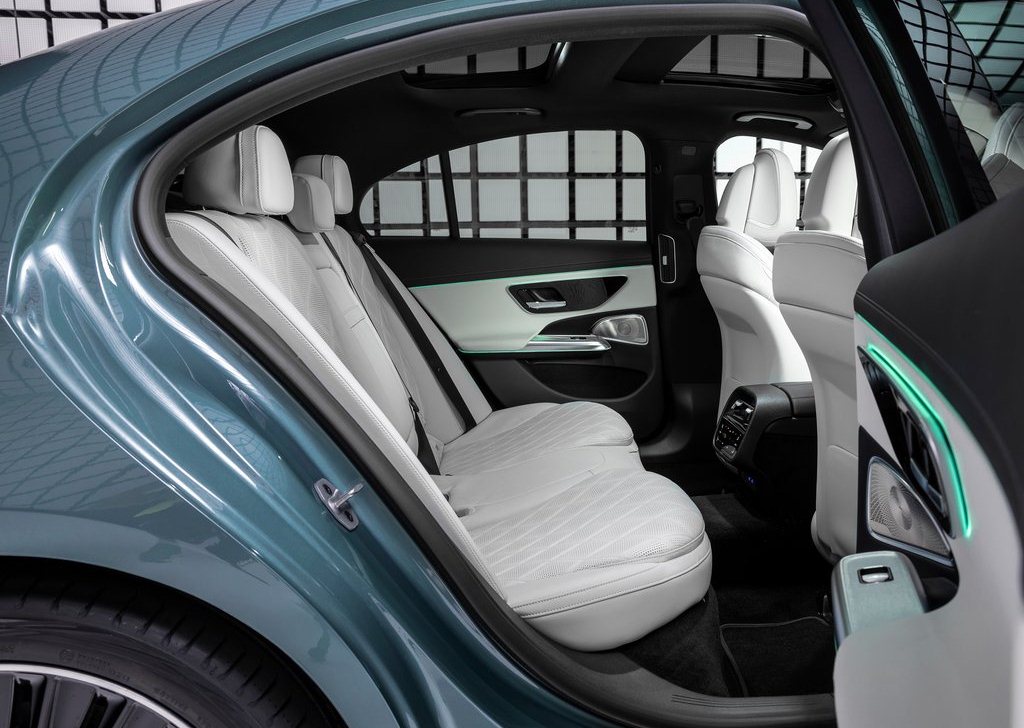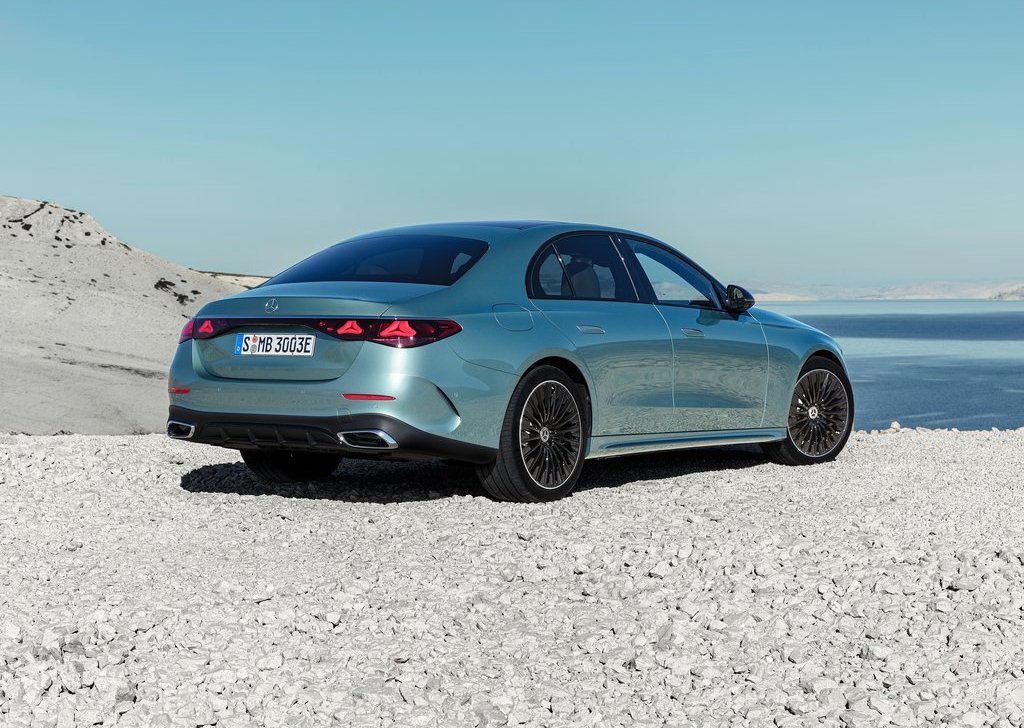For over 75 years, the E-Class has set the standard for mid-range luxury saloons. In 2023, Mercedes-Benz will open a new chapter for the business saloon: the new E-Class points the way in the transition from the combustion engine to electric drive. At the same time, its new electronics architecture allows a comprehensive digital user experience. The first saloon models of the 214 series will arrive at the European sales partners in autumn 2023.
Classic proportions and special character lines in the exterior design
The new Mercedes-Benz E-Class has the proportions of a classic three-box saloon: the short front overhang and long bonnet are followed by a greenhouse which is set well back. The "cab-backward" design is rounded off by the well-proportioned rear overhang.
A black panel-like surface connects the radiator grille with the headlamps. This insert in high-gloss black is visually reminiscent of the Mercedes-EQ models. The three-dimensionally designed radiator grille is either progressive or classic, depending on the equipment line. The new E-Class has high-performance LED headlamps as standard. As an optional extra, DIGITAL LIGHT is available without and with a projection function. All headlamp variants offer a distinctive day and night design. As a typical feature of the brand, the daytime running lights take the shape of an eyebrow. Powerdomes accentuate the bonnet.
The side view shows off the harmonious proportions and the distinctive "cab-backward" design to particularly good effect. The flush-fitting door handles familiar from the luxury Mercedes-Benz models are available as an option. The two separate character lines on the side emphasise the car's sporty character.
MBUX Superscreen as a highlight of the interior design
The dashboard makes for the digital experience in the interior. If the E-Class is equipped with the optional front passenger screen, the large glass surface of the MBUX Superscreen extends to the central display. Visually detached from this is the driver's display in the driver's field of vision. The models without a passenger display feature a large trim element that extends to the centre. Visually detached, the central display appears to float above the concave surface of this trim element.
The front section of the instrument panel is illuminated by the light strip of the Active Ambient Lighting. This runs in a wide arc from the windscreen, past the A-pillars and into the doors. This creates a generous feeling of space. An apparently free-floating control array in the upper section of the door panels matches the look of the glass surfaces of the screens.
Half of the engine variants are plug-in hybrids
Thanks to systematic electrification and intelligent downsizing, the new E-Class sets new standards in efficiency. Half of all the models will be fourth-generation plug-in hybrids. The model range already achieves this high proportion at market launch. Three of the six E-Class versions combine the advantages of a vehicle with combustion engine with those of an electric car.
The combustion engines are four and six-cylinder units from the current modular Mercedes-Benz engine family FAME (Family of Modular Engines). Accordingly, the engine range plays a major role in the flexibility of the international production network, with needs-based electrification.
In addition to turbocharging, both the diesel and petrol engines feature intelligent support from an integrated starter-generator (ISG). They are therefore mild hybrids. Thanks to a new battery, the power of the electric motor has been increased from 15 to 17 kW and the boost torque to 205 Nm.
The E-Class as a long-standing success story
Mercedes-Benz has produced more than 16 million upper mid-range vehicles since 1946. The heritage of the Mercedes-Benz E-Class goes back to the very early days of the brand. At the beginning of the 20th century, the preceding companies from which Mercedes-Benz emerged brought corresponding vehicles to market.
When operations recommenced after the Second World War, the Model 170 V (W 136) originally introduced in 1936 went back into production. In 1947 the Saloon followed as the first post-war passenger car from Mercedes-Benz. The 180 model (W 120) of 1953 with self-supporting "Ponton" body introduced new technical as well as formal features. In 1961, the four-cylinder versions of the "Tailfin" series (W 110) followed. In 1968, the upper medium class of the "Stroke/8" series (W 114/115) signified the next major step. The succeeding 123 model series from 1976 proved even more successful.
Exterior design
The new E-Class combines tradition and modernity: on the one hand, the model series continues the long model history of the classic Mercedes-Benz E-Class; on the other hand, its new appearance builds a bridge to the avant-garde trendsetters from Mercedes-EQ.
The new E-Class has the proportions of a classic three-box saloon: the short front overhang and long bonnet are followed by a greenhouse which is set well back. The passenger area is generously dimensioned, partly owing to the two-centimetre longer wheelbase (2961 millimetres) compared to the preceding series. The "cab-backward" design is rounded off by the well-proportioned rear overhang. Among other things, the E-Class derives its status from the so-called prestige dimension, i.e. the distance from the front axle to the windscreen. Nevertheless, sportiness has not been sacrificed: powerdomes accentuate the bonnet. The flowing C-pillar has a dynamic effect. The new E-Class has a wide track (front/rear: 1634/1648 mm) and flush-fitted wheels measuring up to 21 inches.
Interior design
The dashboard makes for the digital experience in the interior. If the Mercedes-Benz E-Class is equipped with the optional front passenger screen, the large glass surface of the MBUX Superscreen extends to the central display. Visually detached from this is the high-resolution driver display in the driver's field of vision.
The contour of the cover glass is dynamic in design. For the central display, the glass surface is extended downwards accordingly. The profile becomes flat towards the outer edges. A narrow nozzle band nestles against the upper contour of the glass surface, connecting the central nozzle with the outer nozzles to form a single unit.
The models without a passenger display feature a large trim element that extends to the centre. Visually detached, the central display appears to float above the concave surface of this trim element.



















![2026 Kia Sportage [EU] Review: A Refined European Crossover with Bold Style and Electrified Options](https://blogger.googleusercontent.com/img/b/R29vZ2xl/AVvXsEgqMRwJE1m90uCMgRSB6oc4bAzmAaKXJlNoCwavK5fXHaphLYY1sUVXdxUC94zuj95CdjDG2SqRnUBYMqta-dapTLIaHhzEdJAS821ldVMQOKfAZNpQlZ5fYTwKzKbKj8ad9QeKlaQPcNLRZ6zaGvuXhsg1kQ6zQCQqYtjmOM8q9u-a7Nl3WYjp773OLXJR/w680/2026%20Kia%20Sportage%20%5BEU%5D_01.jpg)



0 Comments